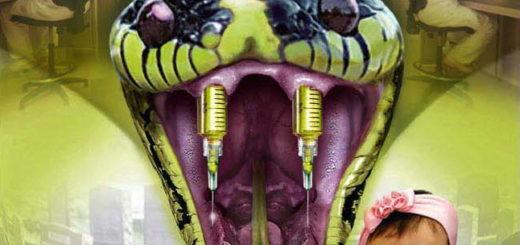Buttered Popcorn Flavoring Linked to Alzheimer’s
By Dr. Mercola
If you like to snack on the occasional bag of microwave popcorn, it’s probably the buttery flavoring that you crave.
This comes from an artificial flavoring called diacetyl, which is a natural byproduct of fermentation found in butter, beer and vinegar… and also a chemical made synthetically by food companies because it gives foods that irresistible buttery flavor and aroma.
Many companies who manufacture microwave popcorn have already stopped using the synthetic diacetyl because it’s been linked to lung damage in people who work in their factories.
But now a new study at the University of Minnesota shows that diacetyl is not only a risk to workers’ lungs… it may also pose a risk to your brain.
Microwave Popcorn Chemical Linked to Alzheimer’s Disease
Researchers conducting test-tube studies revealed that diacetyl has several concerning properties for brain health. Not only can it pass through the blood-brain barrier, which is intended to help keep toxins out of your brain, but it can also cause brain proteins to misfold into the Alzheimer’s-linked form known as beta amyloid. It also inhibits mechanisms that help to naturally clear the dangerous beta amyloid from your brain.1
It’s not known at this time whether eating diacetyl-containing foods (it’s used not only in microwave popcorn but also in other snack foods, baked goods, pet foods, some fast foods and other food products) increases your risk of Alzheimer’s, but the finding that it may contribute to brain plaques linked to Alzheimer’s at very low concentrations is concerning, to say the least.
How many other synthetic chemicals have we been told are perfectly safe, only to find out over time that they aren’t. MSG and aspartame come to mind… but there are countless others as well.
Removing Diacetyl from Microwave Popcorn Doesn’t Make it Safe…
As mentioned, diacetyl is known to cause serious, sometimes life-threating respiratory illness in microwave popcorn-plant and flavoring plant workers. Many companies therefore began to stop using the chemical in their products, replacing it with another ingredient called 2,3-pentanedione (PD), which is also used to impart a buttery flavor and aroma.
Now researchers have revealed that PD, too, can lead to respiratory toxicity similar to that caused by diacetyl.2 The chemical was also capable of pathologically altering the gene expression in rat brains, leading to neurotoxicity. The study’s lead researcher noted:
“Our study is a reminder that a chemical with a long history of being eaten without any evidence of toxicity can still be an agent with respiratory toxicity when appropriate studies are conducted.”
Not to mention, perfluoroalkyls (PFCs), which are chemicals used to keep grease from leaking through food wrappers, are widely used in microwave-popcorn packaging. These chemicals migrate into your food and are processed by your body, where they can disrupt your endocrine system and affect your sex hormones. PFCs have been linked to infertility, thyroid disease, cancer, immune system problems, and more.
Most US Corn is Genetically Modified
About 86 percent of all corn crops grown in the United States are genetically modified (GM), which brings a new set of health concerns to your microwave popcorn. Interestingly, none of the popcorn is genetically engineered, however just about all the other corn is, which is a great reason to avoid it. Additionally, as a grain it will typically not promote good health for most people.
So-called “Bt corn” is equipped with a gene from the soil bacteria Bacillus thuringiensis (Bt), which produces Bt-toxin – a pesticide that breaks open the stomach of certain insects and kills them. This pesticide-producing corn entered the food supply in the late 1990’s, and over the past decade, the horror stories have started piling up.
Monsanto and the US Environmental Protection Agency (EPA) swore that the toxin would only affect insects munching on the crop. The Bt-toxin, they claimed, would be completely destroyed in the human digestive system and would not have any impact on animals and humans. The biotech companies have doggedly insisted that Bt-toxin doesn’t bind or interact with the intestinal walls of mammals, and therefore humans.
However, the corn’s Bt-toxin has been detected in the blood of pregnant women and their babies, as well as in non-pregnant women. Specifically, the toxin was identified in 93% of pregnant women, 80% of umbilical blood in their babies, and 67% of non-pregnant women tested.3 And there’s plenty of evidence showing that the Bt-toxin produced in genetically modified Bt crops like corn is toxic to humans and mammals and triggers immune system responses. For example, in government-sponsored research in Italy, mice fed Monsanto’s Bt corn showed a wide range of immune responses, such as:4
- Elevated IgE and IgG antibodies, which are typically associated with allergies and infections
- An increase in cytokines, which are associated with allergic and inflammatory responses. The specific cytokines (interleukins) that were found to be elevated are also higher in humans who suffer from a wide range of disorders, from arthritis and inflammatory bowel disease, to MS and cancer
- Elevated T cells (gamma delta), which are increased in people with asthma, and in children with food allergies, juvenile arthritis, and connective tissue diseases.
Rats fed another of Monsanto’s Bt corn varieties called MON 863, also experienced an activation of their immune systems, showing higher numbers of basophils, lymphocytes, and white blood cells.5 These can indicate possible allergies, infections, toxins, and various disease states including cancer. There were also signs of liver and kidney toxicity.
How is Popcorn Popped?
If you’ve ever wondered how a corn kernel turns into popcorn, the video above may give you a clue. A kernel of corn contains both moisture and oil, along with a hard, dense starch inside. As the kernel is heated, the moisture in the kernel gets turned into steam, which is held inside of the strong hull.
This turns the dense starch into a soft, pliable material, and as the steam continues to build pressure and heat, the hull ruptures suddenly and the starch expands into an airy foam that sets into the popcorn you’re familiar with.
If you love popcorn and can’t imagine giving it up, make your own at home using organic popping corn and coconut oil or butter. Place the oil or butter in a large pot, turn it on to medium heat and add your kernels. When the popping slows to one or two “pops” every few seconds, you’re all done. Add your own natural seasonings like grass-fed, raw butter and Himalayan salt for a natural popcorn snack without all the artificial ingredients and chemicals that are inevitable with the microwave variety.
















